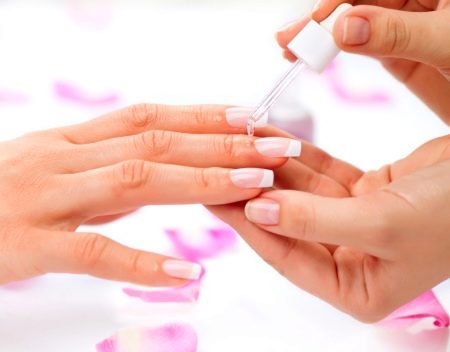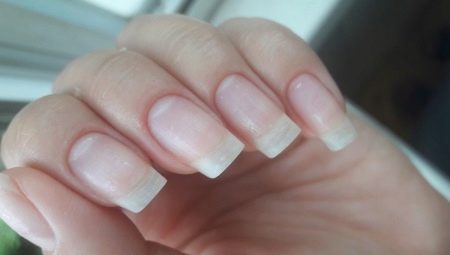Who would ever have thought that a manicure could be done twice, or even once a month, and at the same time have well-groomed hands with perfect nails? The previous manicure was very short-lived, the edges were chipped off, the coating was covered with cracks, and the varnish was erased. And such an effect could be expected even on the second day after the procedure. Now the nail design is done with shellac, which is dried in a special lamp, scientifically called this process polymerization.
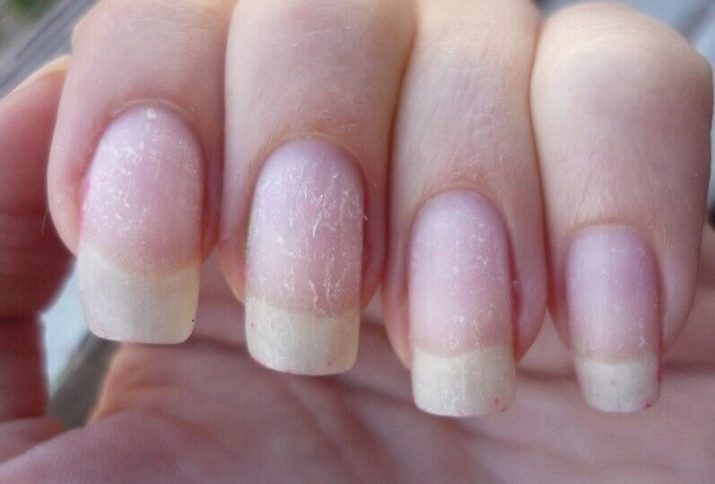
Unfortunately, you have to pay for such a persistent effect. And the price is rather big. After removing shellac, it is often possible to detect problems on the nails. This may be the yellowness of the nail plates, brittle nails, a rough surface, delamination and other unpleasant moments. Such situations should be eliminated, and not covered with a new manicure.
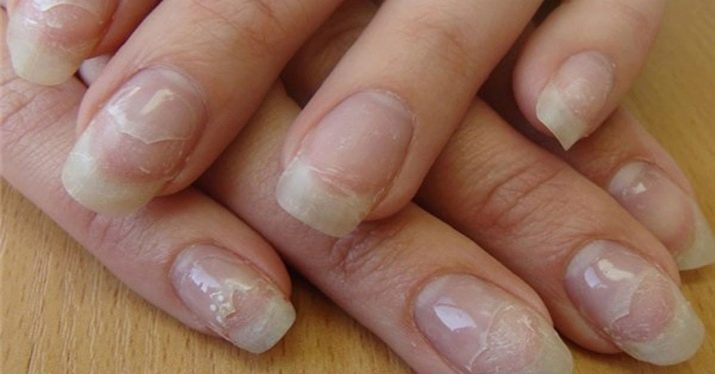
What is shellac?
To begin with, we will understand what shellac is - the culprit in nail problems. This material is a cross between nail polish and gel, which is used to build the nail plate. If we disassemble the name Shellac, we get the name of the brand that actively protects the know-how.

Shellac can not be used for building, which can not be said about the gel. Also, it is absolutely not suitable for the correction of nails. For storage of shellac, ordinary bottles with a brush are used, which are already well known to us. To dry this material, exposure to ultraviolet radiation is required. The list of shellac features does not end there.
- The coating can stay on the nails for a very long time, more than a month that's for sure. Everything will depend on the quality of work and the features of the sock.Only because of the growth of the nail plate, approximately every 2 weeks you have to remove the old coating and put your nails in order.
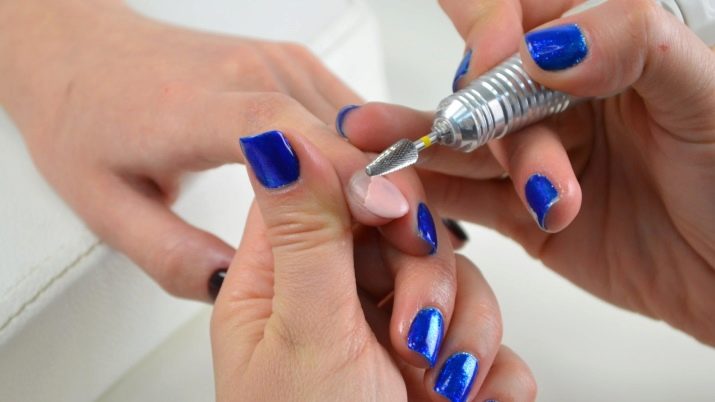
A special solvent is used to remove shellac. For a gel, for example, a mechanical method is used (sawing).
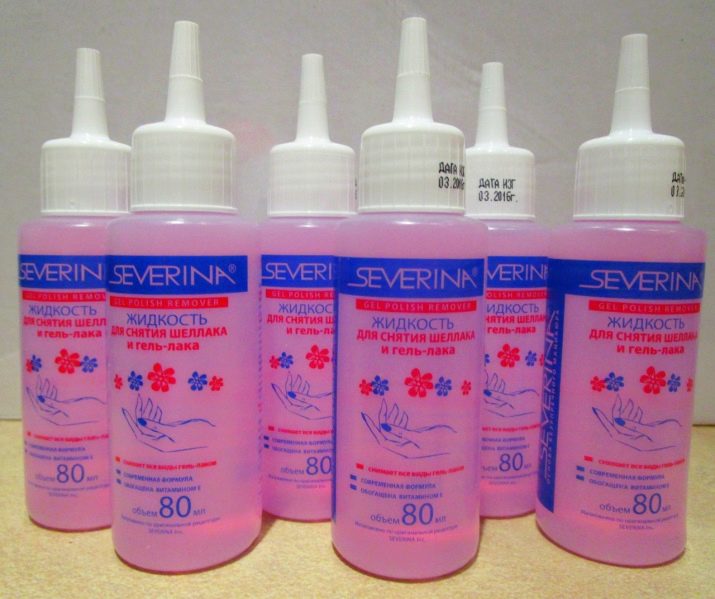
Shellac manicure can be performed only on healthy nails. If the plate is unhealthy, then under a strong coating it will become even more exhausted, brittle and brittle. In this case, the nail is more likely to break along with a new manicure.

Shellac can be used during pregnancy and hormonal treatment. There are no special contraindications, but still a consultation with a doctor will not be superfluous.
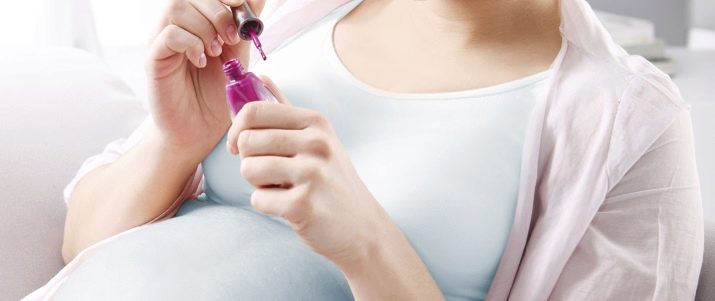
- Shellac manicure has a gentle effect on the nail, in contrast to the gel extension coating. Yet a negative impact is present. For a durable manicure that will stay on your nails for a month, you still have to pay.
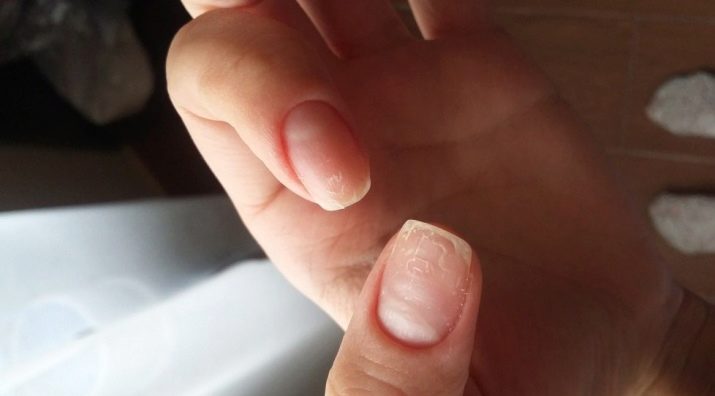
Consequences of use
All shellac producers tirelessly talk about its complete safety and the absence of harmful effects on the nail plate. This is actually not the case. Yes, the effect of shellac is more gentle than in the case of the gel, but still it is. The consequences of using shellac, especially permanent, in which the nails do not rest from such a manicure, can manifest themselves in different ways. Nails spoil for several reasons.
- Polishing the plate, even very gentle, in any case, thins it. If the nails are already thin, and even the master may not calculate the duration and intensity of polishing, then the matter is very bad.
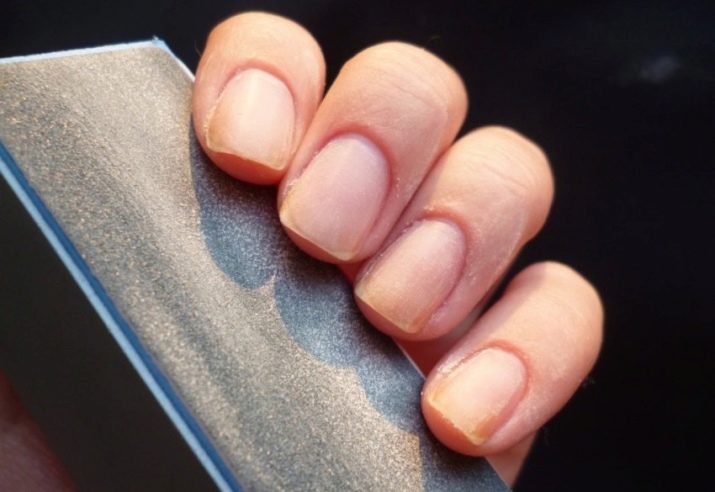
Shellac after drying forms a dense, durable layer. Air and sunlight do not enter through it. But nails are part of a living organism, they need high-quality nutrition, air and sunlight. If these three factors are limited, then the nails will become dry, soft, depleted.
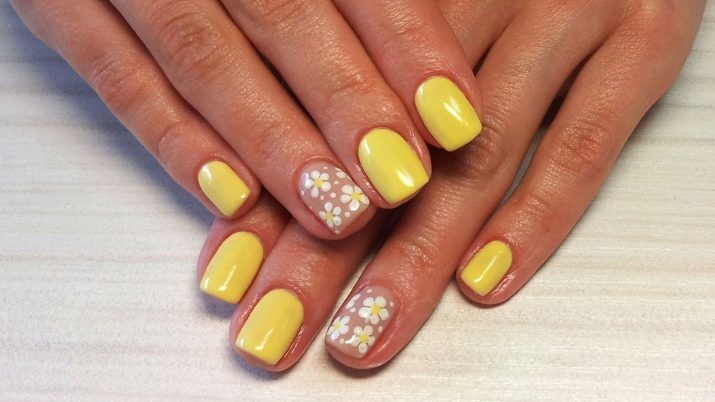
But you should not be afraid of UV radiation. Of all the procedures, it is the most harmless, of course, if it is performed according to the rules, in compliance with safety precautions. Only people with sensitive skin, which does not tolerate UV rays, should be wary of such a procedure.
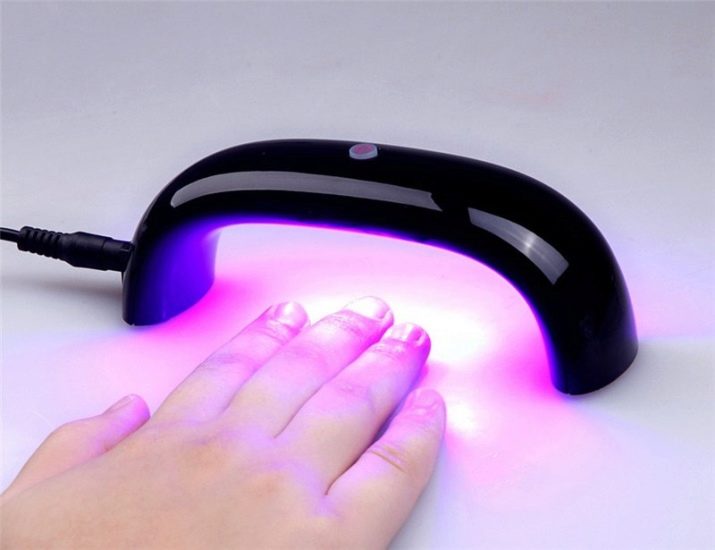
There are several types of problems that can occur on the nails after removing shellac. Having found one of them, we can say that the nails have deteriorated and they need urgent help.
- When cutting off a nail or removing a design, excessive zeal may be shown or technology may be impaired. As a result of such actions, the nails are very thin, they hurt at the slightest touch, not to mention the temperature change during drying in the lamp.
- From poor-quality materials that attract at an affordable price, the plate can crack and peel just under shellac. Further, the nails may become yellow and rough, become stained and move away from the nail bed.
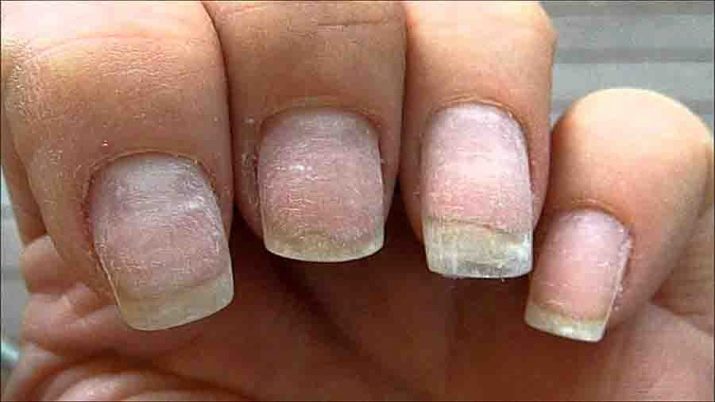
From excessively long drying in the lamp without following the technology, painful corns can form under the nail plates. At the same time, you will not be delighted with the skin on your hands, since it will peel off and may even crack.
Fungus is another common problem that masters can “award”. The reason may be tools that have not been disinfected, and violations of basic hygiene standards.
Some people are allergic to shellac. You can find out about its presence by blisters on the fingers, often they itch and hurt. In this case, you will need to change materials or completely abandon shellac.
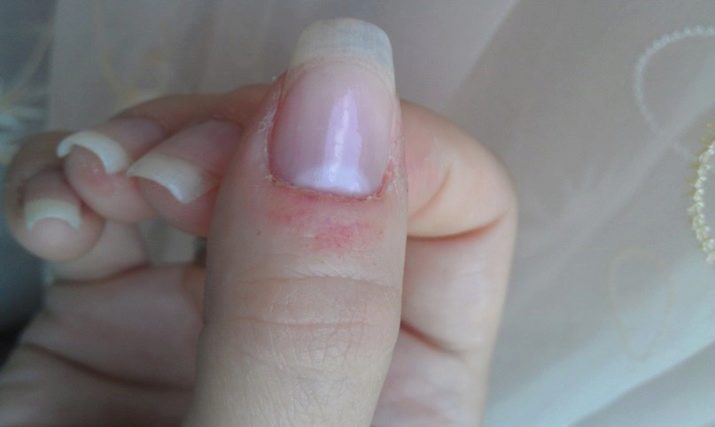
Recovery Methods
If, after removing shellac, problems with the nails that we described above were found, it is imperative to take appropriate measures. There are many ways that you can restore the nail plate.
Some of them can be used at home, other procedures can only be carried out by a specialist in the salon.
- Beeswax and honey are used to seal nails. As a result of this procedure, the nail plates are covered with a protective film, which protects them from damage, mechanical stress and external negative factors. Such a product is sold in the form of paste and powder. It is necessary to use both drugs, separately they will not allow to achieve the desired result. Bee restoration can be applied to peeled nails at home, and not just in salons.

- Restorative preparations resembling ordinary varnishes are sold in many pharmacies, salons and beauty shops. Such recovery can be transparent and colored, aimed at eliminating one problem or have a complex effect. Such drugs are available in a large assortment by many companies. Various preparations can be used as a basis, for example, silk, keratin, marine minerals. To remove such therapeutic coatings, you need to use a special tool that does not contain acetone. These drugs can be applied under the varnish, replacing the base.
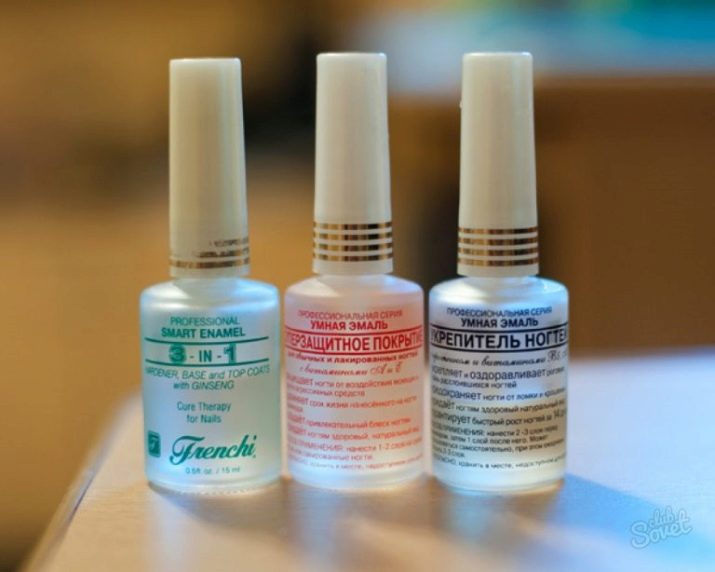
Kalyon's “Ship” product is unique in its composition and effect. It allows not only to strengthen the plates, but also stimulates their growth. Available in bottles with a brush, can be transparent or pearlescent. Treatment should be carried out for 3 weeks. It can also be used as a base.

Keratin Nail Restorer Trind is based on keratin, has a moisturizing and regenerating effect on nails. Such a coating should be applied twice a day, which is its main drawback.

A wide range of oils for the treatment of cuticles and nails. Olive oil has a good effect, from which you can make baths. In heated oil, the hands are aged for about 15 minutes. The procedure is performed daily for a week. Experts also recommend the use of jojoba oil. There are special oils that are available in bottles with a brush. They allow you to quickly tidy and nails, and cuticles.
